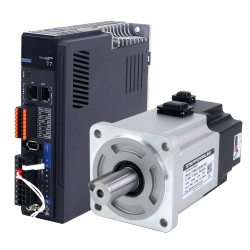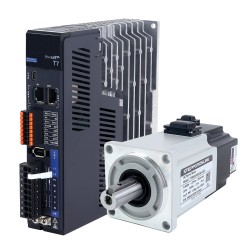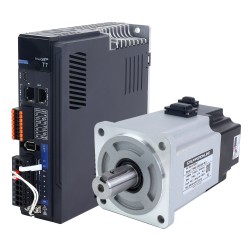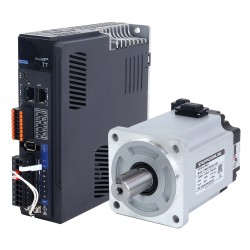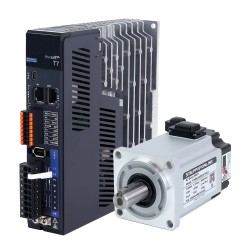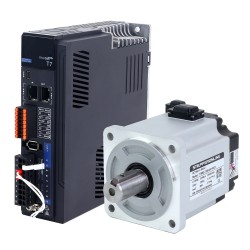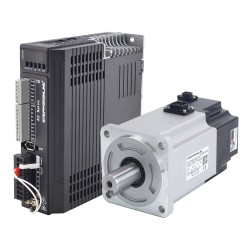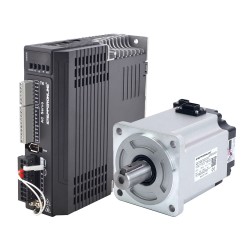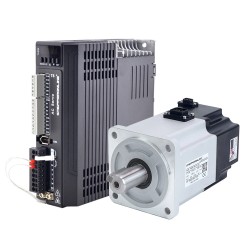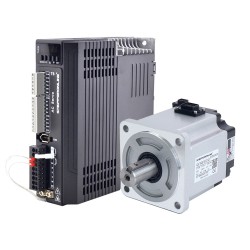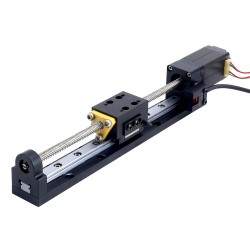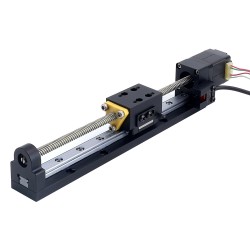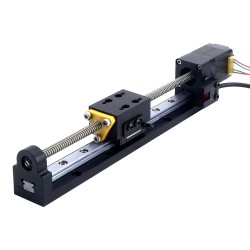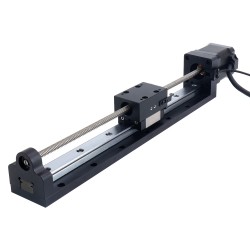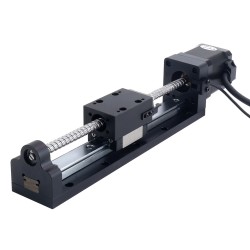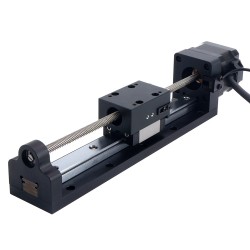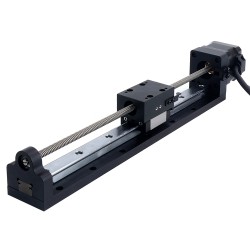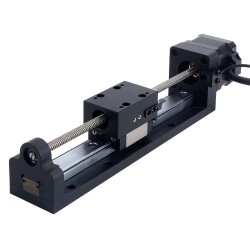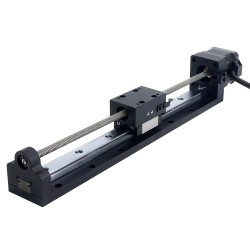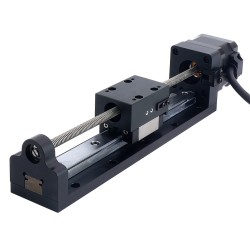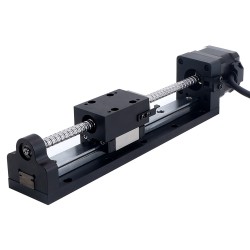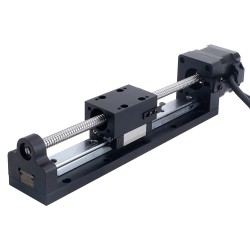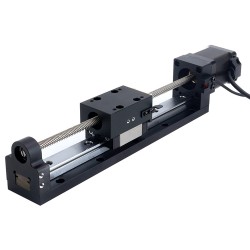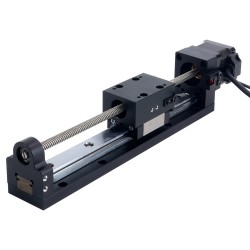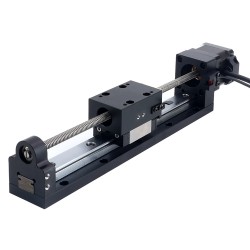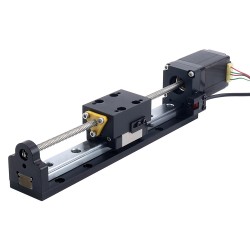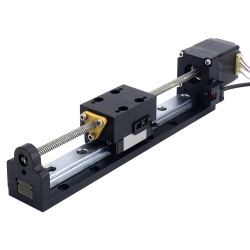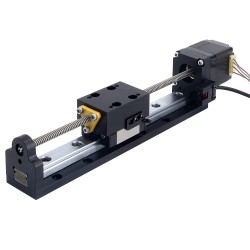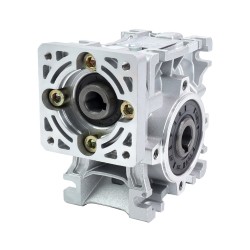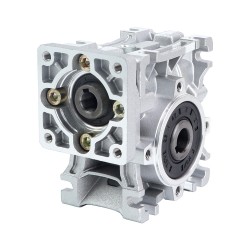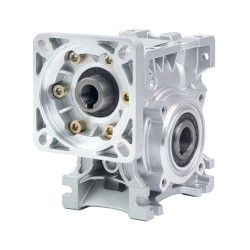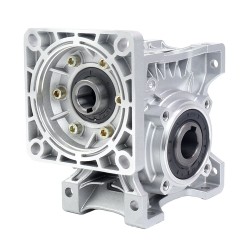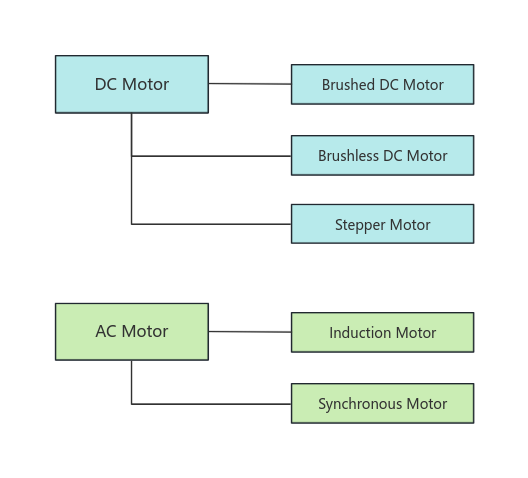An Article Lets you Know Everything About Brushless DC Motors
Please click directly on any chapter you are interested in.
- What is a Brushless DC Motor?
- Common Motor Type
- Brushless DC Motor Mechanism
- How Does Brushless DC Motor Work?
- Controlling Brushless DC Motor
- DC Brushed vs. Brushless Motors
- Brushless DC Motor Type
- How to Choose Brushless DC Motor Driver
- Advantages and Disadvantages of Brushless DC Motor
- Uses and Applications of Brushless DC Motor
● What is a Brushless DC Motor? ↑Back to top
A brushless DC motor (BLDC Motor: Brushless Direct Current Motor) is a 3-phase motor whose rotation is driven by the forces of attraction and repulsion between permanent magnets and electromagnets. It is a synchronous motor that uses direct current (DC) power. This motor type is often called a "brushless DC motor" because in many applications it uses brushes instead of a DC motor (brushed DC motor or commutator motor). The brushless DC motor is essentially a permanent magnet synchronous motor that uses DC power input and uses an inverter to convert it into a three-phase AC power supply with position feedback.
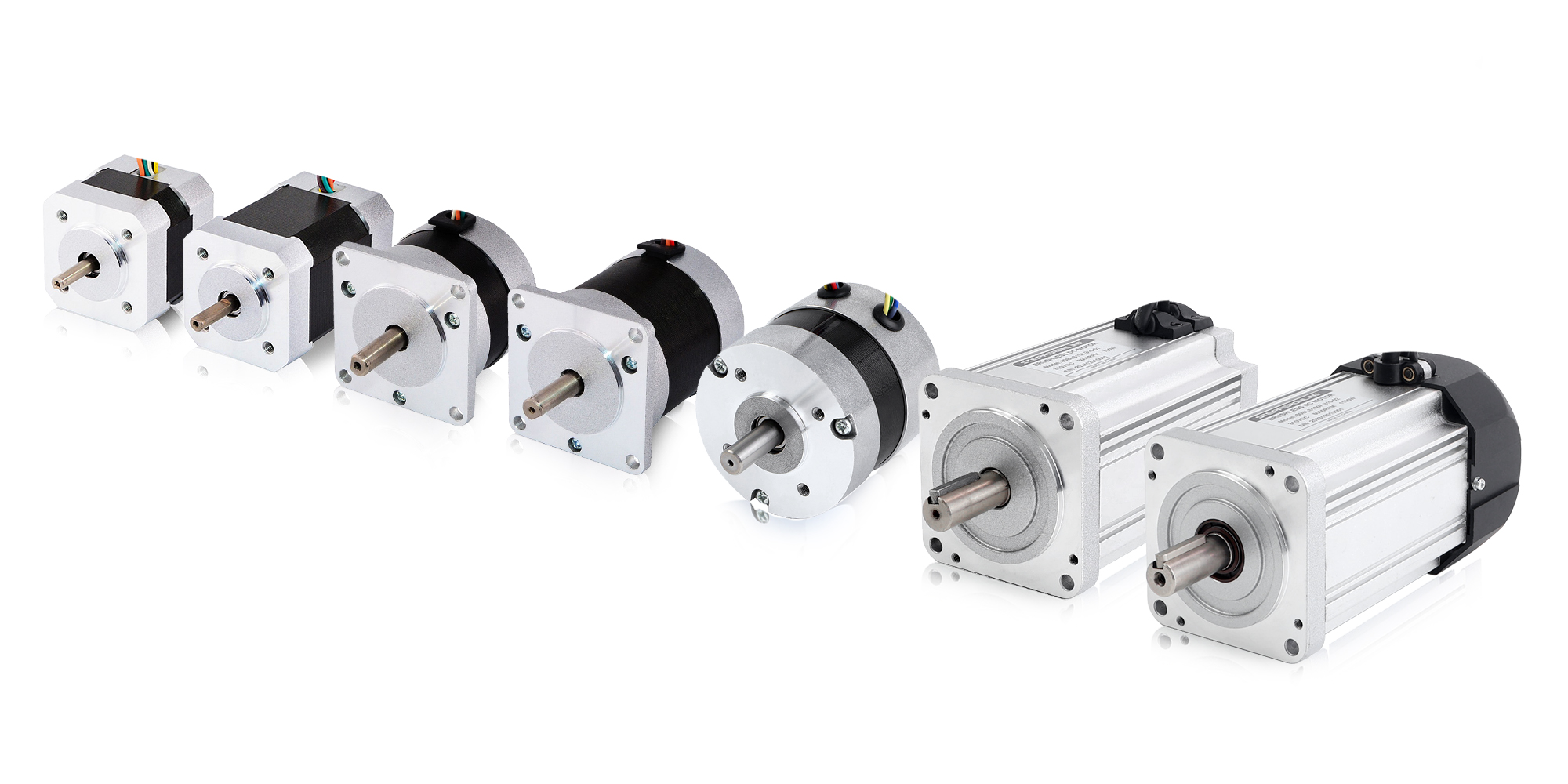
The brushless DC motor is a motor based on the Hall effect. It consists of a rotor, a stator, a permanent magnet and a drive motor controller. The rotor of a brushless DC motor consists of multiple steel cores and multiple windings that are attached to the rotor shaft. When the rotor turns, the controller detects the rotor position via the current sensor and then controls the direction and strength of the current in the stator winding, thereby achieving a good torque.
Together with an electronic drive controller that controls the brush function and converts the supplied DC power into AC power, the performance of a BLDC motor is comparable to that of a brushed DC motor without the need for brushes, which have a limited service life. BLDC motors are therefore also referred to as EC motors (electronically commutated) to distinguish them from mechanically commutated motors with brushes.
● Common Motor Type ↑Back to top
Motors are divided into the following types based on their type of power supply (AC or DC) and the method they use to produce rotation. Below, we briefly describe the characteristics and uses of each type.
| Common Motor Type | |||
| DC Motor | Brushed DC Motor | ||
| Brushless DC Motor | |||
| Stepper Motor | |||
| AC Motor | Induction Motor | ||
| Synchronous Motor | |||
A brushed DC motor is a rotating electrical machine that contains a brush device and converts DC electrical energy into mechanical energy (DC motor) or mechanical energy into DC electrical energy (DC generator). Different from brushless DC motors, brush devices are used to introduce or extract DC voltage and DC current. DC brush motor is the basis of all motors. It has the characteristics of fast starting, timely braking, smooth speed regulation in a wide range, and relatively simple control circuit. One disadvantage, however, is that the brushes and commutator wear relatively quickly due to constant contact, requiring frequent replacement and periodic maintenance.
A stepper motor is an electromechanical device that directly converts electrical pulses into mechanical motion. By controlling the sequence, frequency and quantity of electrical pulses applied to the motor coil, the steering, speed and rotation angle of the stepper motor can be controlled. Without the use of a closed-loop feedback control system with position sensing, precise position and speed control can be achieved by using an open-loop control system with simple control and low cost composed of a stepper motor and its matching driver.
An induction motor or asynchronous motor is an AC motor in which the torque-generating current in the rotor is obtained by electromagnetic induction of the magnetic field of the stator windings. Therefore, induction motors do not require an electrical connection to the rotor.
With a synchronous motor, the rotation is synchronized with the frequency of the supply current. These motors are often used to drive rotating trays in microwave ovens; reduction gears in the motor unit can be used to obtain the appropriate rotational speed to heat food. For induction motors, the rotational speed also changes with frequency. But the movements are out of sync. In the past, these motors were often used in electric fans and washing machines.
● Brushless DC Motor Mechanism ↑Back to top
Brushless motors rely on two key components to operate: a rotor holding permanent magnets, and a stator holding copper coils that turn into electromagnets when current is passed through them.
Brushless motors are divided into inrunner(internal rotor motors) and outrunner(ixternal rotor motors) types. The inrunner motor stator is located outside and the rotor rotates internally, while the outrunner motor rotor rotates outside the stator. When current is passed to the coils of the stator, it turns into an electromagnet and forms the north and south poles. When the polarity of the electromagnet matches that of the permanent magnet it faces, their like poles repel and the rotor spins. If the current is maintained in this configuration, the rotor will spin briefly and then stop after the opposing electromagnets and permanent magnets align. Therefore, the current is passed in the form of a three-phase signal, constantly changing the polarity of the electromagnet, keeping the rotor spinning.
The speed at which the motor rotates is equal to the frequency of the three-phase signal, so if you want the motor to rotate faster, you can increase the frequency of the signal. For a remote control vehicle, increasing the speed by increasing the throttle is equivalent to telling the controller to increase the switching frequency.
● How Does Brushless DC Motor Work? ↑Back to top
Brushless DC motor, also known as permanent magnet synchronous motor, is a kind of electric motor with the characteristics of high efficiency, small size, low noise and long life. It is widely used in industrial production and personal consumer products.
The working principle of the brushless DC motor is based on the interaction of electricity and magnetism. It consists of permanent magnets, a rotor stator, an electronic speed controller, etc. Permanent magnets are the main magnetic field source of brushless DC motors, and rare earth permanent magnets are usually used. When energized, the permanent magnets produce a fixed magnetic field that interacts with the current inside the motor to form a rotor magnetic field.
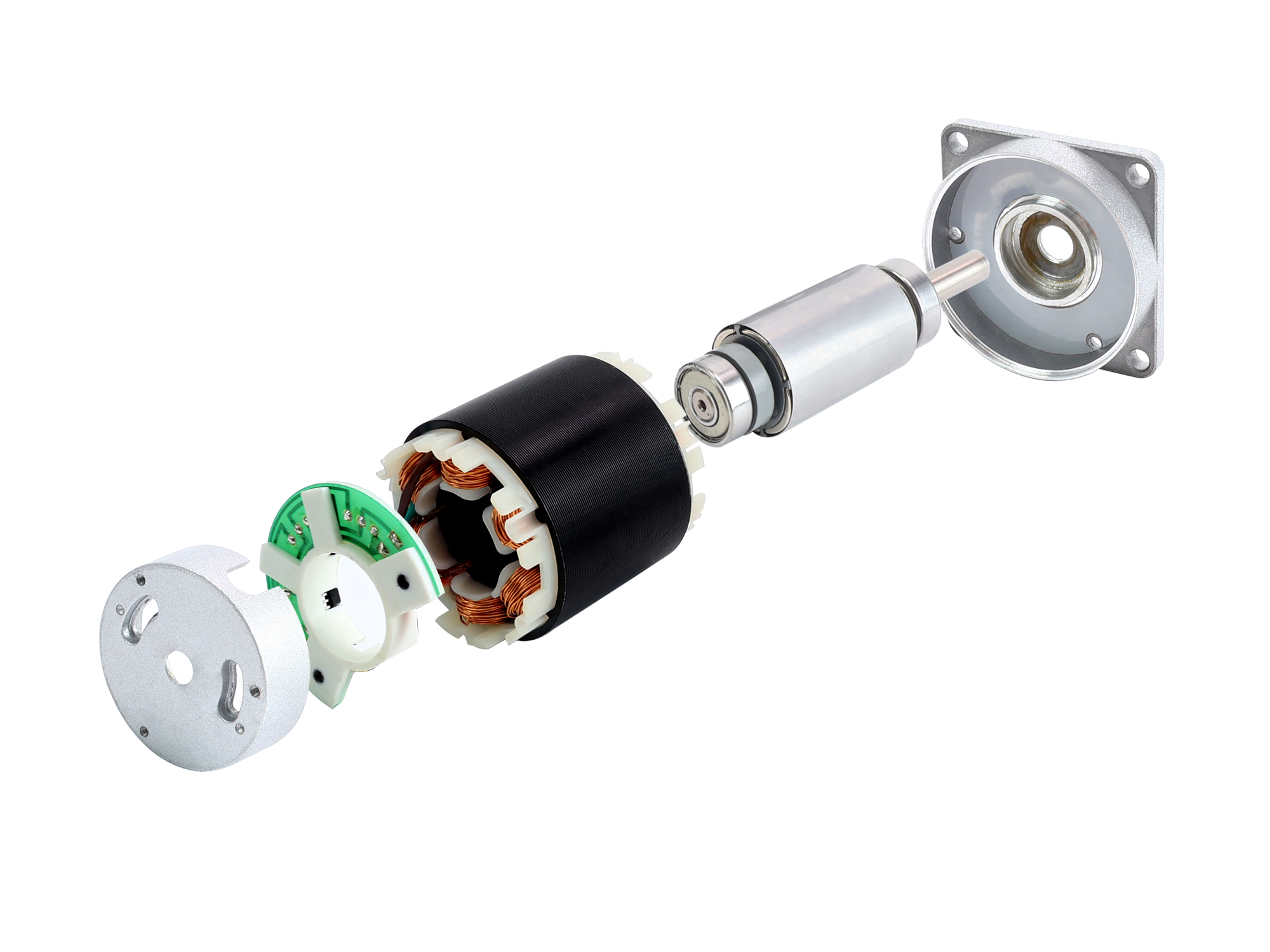
The rotor is the rotating part of the brushless DC motor and consists of multiple permanent magnets. The rotor magnetic field is affected by the stator magnetic field to cause it to rotate.The stator is the stationary part of the brushless DC motor, which is composed of copper coils, iron cores, etc. When current passes through the stator coils, a variable magnetic field is formed. According to Faraday's law of electromagnetic induction, the rotor will be affected by the magnetic field of the stator to produce a rotational torque.
The electronic speed controller controls the working state of the motor and controls the motor's speed by controlling the current of the electronic speed controller. The electronic speed controller can control the motor by adjusting parameters such as pulse width, voltage, and current.
When the motor is working, current passes through the stator and rotor, forming an electromagnetic force that interacts with the magnetic force of the permanent magnets. The motor will rotate according to the instructions of the electronic speed controller and output mechanical work, thereby realizing the operation of the driven equipment or machinery.

In short, the working principle of the brushless DC motor is to use electrical and magnetic interaction to generate rotational torque between the rotating permanent magnet and the stator coil, thereby driving the motor to rotate and converting electrical energy into mechanical energy to achieve the purpose of work.
● Controlling Brushless DC Motor ↑Back to top
To make a BLDC motor rotate, the direction and timing of the current in the coils must be controlled. Figure below shows the stator (coils) and the rotor (permanent magnets) of a BLDC motor. Three coils U, V, W with 120ºspacing. Driven by controlling the phases and coil currents. Current flows through phase U,phase V and then phase W. Rotation is maintained by continuously switching magnetic flux, causing the permanent magnet to continuously chase the rotating magnetic field induced by the coil. In other words, the energization of U, V, and W must be constantly switched so that the resultant flux keeps moving, creating a rotating magnetic field that continuously pulls on the rotor magnets.
There are currently three mainstream brushless motor control methods:
1. Trapezoidal wave control
Trapezoidal wave control, also known as, 120° control, 6-step commutation control, is one of the simplest brushless DC (BLDC) motor control methods, applying square wave currents to the motor phases, aligned with the trapezoidal back-EMF curve of the BLDC motor for optimal torque generation. BLDC ladder control is ideal for implementing motor control system designs for a wide range of applications including white goods, refrigeration compressors, HVAC blowers, condensers, industrial drives, pumps and robotics.

The advantages of the square wave control method are simple control algorithm and low hardware cost, and a higher motor speed can be obtained by using a controller with ordinary performance.
The disadvantages are large torque fluctuations, a certain amount of current noise, and the efficiency cannot reach the maximum value. Trapezoidal wave control is suitable for situations where the rotation performance of the motor is not high. Trapezoidal wave control uses a Hall sensor or a non-inductive estimation algorithm to obtain the position of the motor rotor, and then performs 6 commutations (one commutation every 60°) within a 360° electrical cycle based on the rotor position.
The motor outputs a force in a specific direction at each commutation position, so it can be said that the position accuracy of trapezoidal wave control is electrical 60°.
Because under this control method, the phase current waveform of the motor is close to a trapezoidal wave, it is called trapezoidal wave control.
2. Sine wave control
The sine wave control method uses SVPWM wave, which outputs a 3-phase sine wave voltage, and the corresponding current is also a sine wave current.
This method does not have the concept of square wave control commutation, or it is considered that an infinite number of commutations are performed within an electrical cycle.

Obviously, compared with square wave control, sine wave control has smaller torque fluctuations and fewer current harmonics, and the control feels more "delicate". However, the performance requirements of the controller are slightly higher than those of square wave control, and the motor efficiency cannot be reached. maximum value.
3. Field-oriented Control(FOC)
FOC (Field-Oriented Control), also known as vector control (VC, Vector Control), is currently one of the best methods for efficient control of brushless DC motors (BLDC) and permanent magnet synchronous motors (PMSM).
Sine wave control realizes the control of voltage vector and indirectly realizes the control of current magnitude, but it cannot control the direction of current.
.png)
The FOC control method can be considered as an upgraded version of sine wave control, which realizes the control of the current vector, that is, the vector control of the motor stator magnetic field.
Since the direction of the motor's stator magnetic field is controlled, the motor's stator magnetic field and the rotor magnetic field can be kept at 90° at all times, achieving maximum torque output under a certain current.
4. Sensorless Control
Unlike traditional motor control through sensors, sensorless control is able to drive the motor without a sensor(i.e. Hall sensors, encoders). This method uses the motor's current and voltage information to determine the rotor position. The motor speed is then derived from the change in rotor position, and this information is used to control the speed of the motor.

The advantage of sensorless control is that it does not require sensors, can operate reliably in harsh working environments, is low in cost, requires only 3 pins, and is small in size. At the same time the life and reliability are longer because there are no Halls to damage. But the disadvantage is also obvious, that is, it does not start smoothly. Because at low speed or when the rotor is stationary, the back electromotive force is too small and the zero-crossing point cannot be detected.
● DC Brushed vs. Brushless Motors ↑Back to top
● Similarities Between DC Brushed and Brushless Motors
Brushless DC motors and brushed DC motors have some common characteristics and working principles:
1. Brushless DC motors and brushed DC motors are similar in structure and both contain a stator and a rotor. The stator generates a magnetic field, and the rotor generates torque by interacting with the stator's magnetic field, thereby converting electrical energy into mechanical energy.

2. Both types of motors require DC power supply to provide electrical energy. Whether it is a brushless DC motor or a brushed DC motor, their working principle is based on direct current.
3. Both brushless DC motors and brushed DC motors can control speed and torque by changing the input voltage or current. This makes them adjustable and controllable for different application scenarios.
● Differences Between DC Brushed and Brushless Motors
Although brushless and brushed DC motors share some aspects in common, they have some distinct differences in performance and advantages.
As the name suggests, brushed DC motors have brushes that commutate the direction of the motor so that it rotates. Brushless motors replace the mechanical commutation function with electronic control.
This article will help you understand the Differences Between DC Brushed and Brushless Motors.
● Brushless DC Motor Type ↑Back to top
● STEPPERONLINE BLDC Motor Type
There are many types of brushless DC motors sold by STEPPERONLINE, and understanding the characteristics and uses of different types of stepper motors will help you decide which type is best for you.
1. Standard BLDC Motor(Inner Rotor)
STEPPERONLONE supplies NEMA 17, 23 frame and metric size 36mm - 80mm standard brushless motor. The motors (internal rotor) include 3-phase 12V/24V/36V low voltage and 310V high voltage electric motors with a power range of 13 - 1100W and a speed range of 2000 - 6000rpm. Integrated Hall sensors can be used in applications that require precise position and speed feedback. While the standard options offer excellent reliability and high performance, most of our motors can also be customized to work with different voltages, powers, speeds, etc. Customized shaft type/length and mounting flanges are available on request.
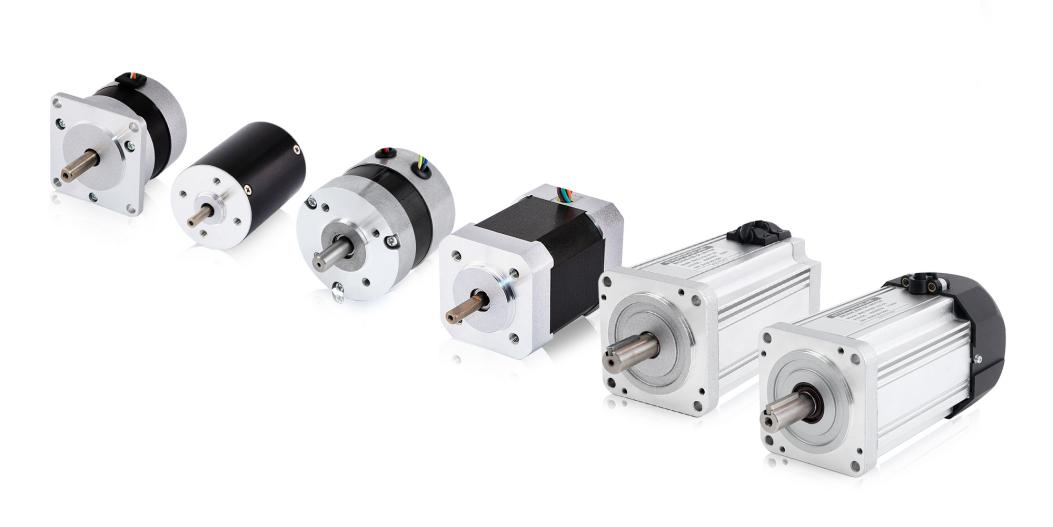
A brushless DC geared motor is a motor with a built-in gearbox (e.g. a planetary gearbox). The gears are connected to the drive shaft of the motor. This picture shows how the gearbox is accommodated in the motor housing.
The gearboxes help to reduce the speed of the brushless DC motor while increasing the output torque (torque). Brushless DC motors are usually operated at speeds of 2000 to 3000 rpm, where they achieve excellent efficiency. If the motor is combined with a gearbox that has a transmission ratio of 20:1, for example, this speed can be reduced to 100 to 150 rpm, increasing the torque by a factor of 20.

Besides, combining the motor and gearbox in a single housing reduces the external dimensions of geared brushless DC motors, which helps to efficiently utilize the machine space in which they are installed.
New technology is producing more powerful cordless outdoor power equipment and tools. A new type of motor integrated into power tools is the external rotor brushless motor design.
Outer rotor BLDC motor or external rotor powered brushless motors feature an external rotor design that provides smooth, smooth rotation. These motors are capable of achieving higher torque than comparably sized internal rotor designs. The higher inertia produced by external rotor motors makes them ideal for applications requiring lower noise and reliable performance at lower speeds.

In an outer rotor motor, the rotor is located on the outside (outside the motor) and the stator is located inside the motor.
Outer-rotor BLDC motors are shorter than inner-rotor motors, providing a cost-effective solution. In these motors, permanent magnets are mounted on a rotor housing that rotates around an inner stator via windings. Outer-rotor motors have lower torque ripple than inner-rotor motors due to the higher inertia of the rotor.
Integrated brushless motors are mechatronics products developed to cooperate with the field of industrial automatic control. This motor is equipped with a high-performance dedicated brushless DC motor driver chip, which has a series of advantages such as high integration, small size, complete protection, simple and clear wiring, and high reliability. This series includes a variety of integrated motors ranging from 100 to 400W. In addition, the built-in driver is equipped with new PWM technology, which enables the brushless motor to run at high speed, with small vibration, low noise, good stability and high reliability. Integrated motors provide a space-saving design that reduces wiring and saves costs compared to separate motor and drive components.
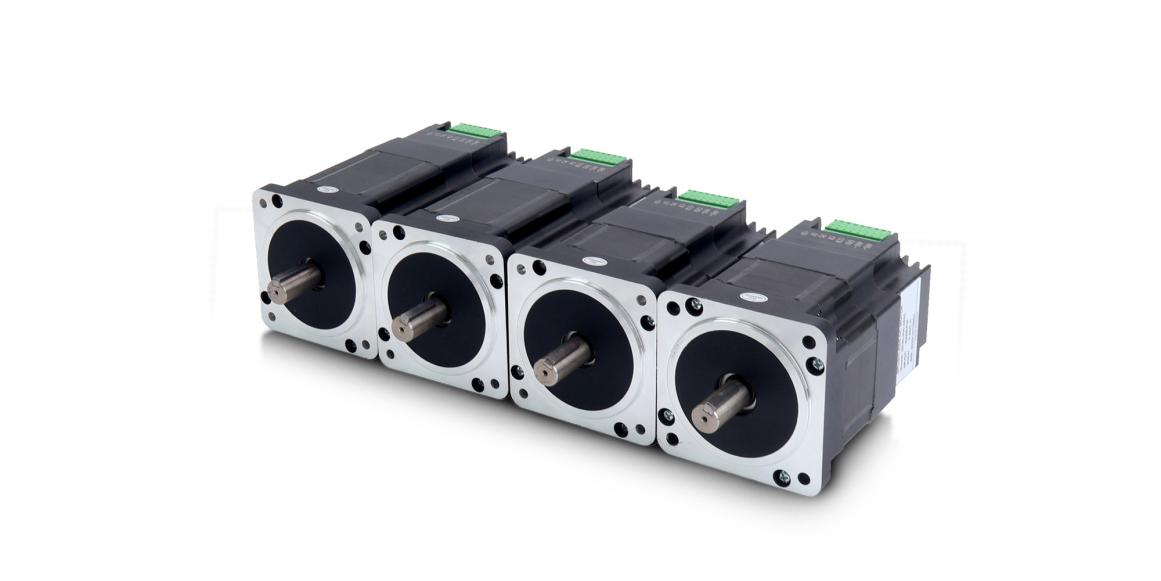
● How to Choose Brushless DC Motor Driver ↑Back to top
1. First you need to choose a suitable brushless motor.
Select a brushless motor based on electrical parameters. First of all, it is necessary to clarify the electrical parameters such as the required motor's speed range, torque, rated voltage, and rated torque, and select the appropriate brushless motor based on these parameters. Generally, the rated speed of brushless motor is 3000RPM, and the working speed is recommended to be above 200RPM. If you need to run at a lower speed for a long time, you can consider using a gearbox to reduce the speed and increase the torque.
Select a brushless motor according to the mechanical size. Select the appropriate motor according to the motor installation dimensions, output shaft dimensions, overall dimensions, etc. that are suitable for the equipment. We support customizing brushless motors in various sizes according to customer requirements.
2. Select the appropriate brushless driver.
Select the appropriate driver according to the electrical parameters of the brushless motor. When selecting a driver, ensure that the rated power and voltage of the brushless motor are within the allowable range of the driver to ensure compatibility between the motor and the driver. Our existing brushless drivers can be divided into low-voltage drivers (12 - 60VDC) and high-voltage drivers (110/220VAC), which are suitable for low-voltage brushless motors and high-voltage brushless motors respectively. It should be noted that the two cannot be mixed.
When selecting a brushless driver, the installation size and heat dissipation conditions of the driver need to be considered to ensure that the driver works in a suitable environment.
● Advantages and Disadvantages of Brushless DC Motor ↑Back to top
● Advantages
Compared with other types of motors, brushless DC motors have the advantages of small size, high output power, low vibration, low noise and long service life. Let’s take a closer look at the advantages of BLDC motors.
One major advantage is efficiency, as these motors can continuously control the maximum rotational force (torque). In contrast, brushed motors only reach their maximum torque at certain points during rotation. In order for a brushed motor to deliver the same torque as a brushless motor, larger magnets must be used. For this reason, even small BLDC motors can deliver considerable power.
The second major advantage, which is related to the first, is controllability. A BLDC motor can be controlled via a feedback mechanism to deliver exactly the desired torque and speed. Precise control, in turn, reduces energy consumption and heat generation and extends battery life if the motor is battery-powered.
As there are no brushes, BLDC motors also offer a long service life and low electrical noise. With brushed motors, the brushes and commutator wear out from continuous moving contact and can also create sparks at the contact. Electrical noise is especially the result of strong sparks in the area where the brushes pass through the commutator gap. This is why BLDC motors are often considered preferable in applications where electrical noise needs to be avoided.
In addition, brushless DC motors also have the following advantages:
1. Higher efficiency and power density than induction motors (with the same output, volume and weight are reduced by about 35%)2. Using precision ball bearings, long service life and quiet operation
3. Wide speed range and full motor output due to linear torque curve
4. Reduce electrical interference emissions
5. Mechanically interchangeable with stepper motors, reducing construction costs and increasing part variety
● Disadvantages
Since brushless motors require more sophisticated electronics, the overall cost of a brushless drive is higher than that of a brush motor.
In the motor control mode section, we introduced that FOC can accurately control the size and direction of the magnetic field, making the motor torque stable, low noise, high efficiency, and with high-speed dynamic response. It is currently the best choice for efficient control of brushless DC motors (BLDC). However, its disadvantages are high hardware cost, high requirements on controller performance, and motor parameters need to match.
It also has a disadvantage, that is, due to inductive reactance, BLDC will be accompanied by jitter when starting, which is not as smooth as the starting of brushed motors.
Additionally, brushless DC motors require specialized knowledge and equipment for repair and maintenance, making them less accessible to the average users.
● Uses and Applications of Brushless DC Motor ↑Back to top
Brushless DC motors (BLDC) are widely used in industrial automation, automobiles, medical equipment, artificial intelligence and other industries because of their long life, low noise, and high torque. Below we will introduce in detail the application of BLDC in various industries.
1. Industrial Automation
Brushless DC motors play an important role in the field of industrial automation, such as servo motors, CNC machine tools, robots, etc. They are also used as actuators to control the movement of industrial robots to perform tasks such as painting, product assembly, and even welding. These devices require high-precision, high-efficiency motors to drive, and brushless DC motors can exactly meet these requirements.

2. Electric Vehicles
The drive motor in electric vehicles is another important application field of brushless DC motors. In particular, brushless DC motors play a leading role in functional replacements that require controllability and in locations where components are used frequently and therefore require long-life components. The main application area after power steering systems is air conditioning compressor motors. Additionally, electric vehicle (EV) traction motors are also a promising area for brushless DC motors. Because the system runs on limited battery power, the motors must be efficient and compact so they can fit in tight spaces.

Since electric vehicles require efficient, reliable, and lightweight motors to provide power, brushless DC motors have these advantages and are therefore widely used in the drive systems of electric vehicles.
3. Aerospace & Drones
In the aerospace field, brushless DC motors are one of the most commonly used electric motors because their excellent performance is very important in these fields. In modern aerospace technology, various auxiliary systems of aircraft rely on powerful and efficient brushless DC motors. In aircraft technology, brushless DC motors are used for control of the flight surface and for driving power systems in the cabin (e.g. fuel pumps, air pressure pumps, power supply systems, generators and power distribution equipment). The excellent performance and high efficiency of brushless DC motors in these applications can ensure flexible control of the flying surface and ensure the stability and safety of the aircraft.

In drone technology, brushless DC motors can be used to control equipment such as drones’ interference systems, communication systems and cameras. Brushless DC motors can solve the high load and fast response problems of these applications with high output power and high-speed response, ensuring the reliability and performance of drones.
4. Medical Equipment
In medical equipment, brushless DC motors are also widely used, such as artificial hearts, blood pumps, etc. These devices require high-precision, reliable, lightweight motors to power them, and brushless DC motors can meet these requirements.

As a kind of motor with high efficiency, low noise and long life, brushless DC motor is widely used in the field of medical equipment. Its application in medical aspirators, infusion pumps, operating beds, etc. has made the operation of the equipment more stable, accurate and reliable, and has made important contributions to the development of medical equipment.
5. Smart Home
In smart home systems, circulating fans, humidifiers, dehumidifiers, air fresheners, heating and cooling fans, hand dryers, smart door locks, electric doors and windows, etc. also use brushless DC motors. The transition of home appliance motors from induction motors to brushless DC motors and their controllers can better meet the requirements of energy conservation, environmental protection, intelligence, low noise and comfort.

Brushless DC motors have also long been used in washing machines, air conditioning systems, vacuum machines and other consumer electronics appliances; more recently, they have also been used in fans, where their high efficiency has contributed to a considerable reduction in electricity consumption.
All in all, the practical applications of brushless motors are everywhere in life. Brushless DC Motors (BLDC) are efficient, durable, and versatile devices with various applications across industries. Their construction, types, and applications make them a crucial component in modern technology and automation.






















































